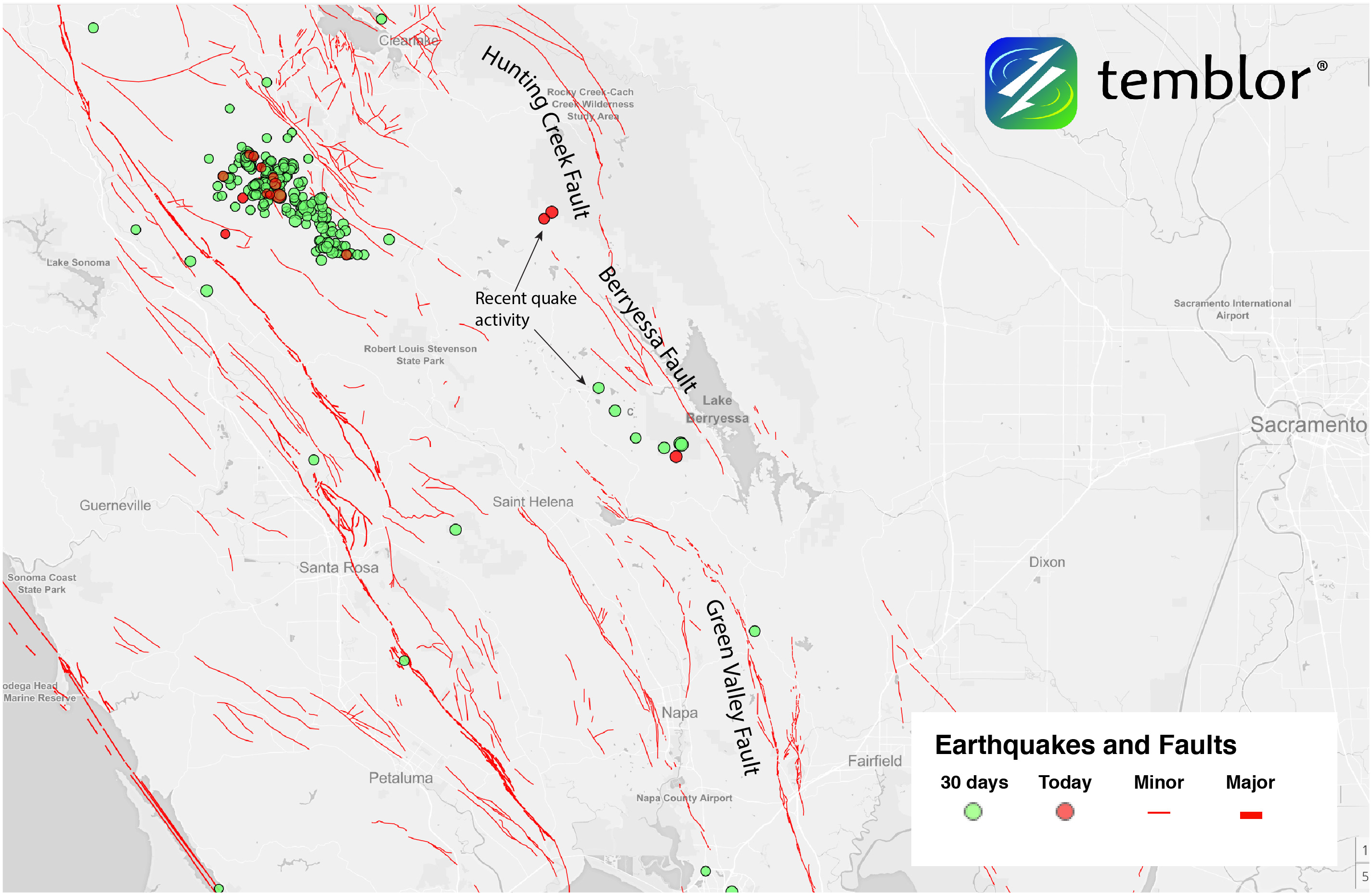By David Jacobson, Temblor

Over the last few weeks, things have been relatively quiet on the earthquake front. This is fortunate for all those living in earthquake country. It also gives us at Temblor an opportunity to look at some smaller earthquakes along our more local faults. One of these is the Hunting Creek-Berryessa fault system, within the larger San Andreas fault system.
The Hunting Creek-Berryessa fault system lies approximately 80 kilometers (50 miles) northeast of the city of San Francisco, along the shores and to the north of Lake Berryessa. Just to the south is the Green Valley Fault, which runs just east of Napa Valley. All these faults have right-lateral slip, meaning that in an earthquake everything on the opposite side of the fault will shift to the right.

In the last two days, there have been eight earthquakes along the Hunting Creek-Berryessa fault system. While none of these exceeded M=3, it is significantly more activity than had been happening in the previous month, over which there had been only one other quake. It should be noted that this increase in activity should not be cause for concern. Having said that, this region is susceptible to large earthquakes.
According to the USGS, because there are almost no discontinuities between the Hunting Creek, Berryessa and Green Valley fault to the south, they can all be considered parts of the same system for the purpose of seismic hazard evaluation. Such a compilation makes for a nearly continuous 100 km-long stretch of active faulting. Within this area, there have been multiple surface ruptures in the last 2,700 years.

Because of the significant hazard in this region, the USGS has created two earthquake scenarios. Both of these, which register M=6.7 and M=7.1, would cause severe shaking as far south as Napa. Therefore, while the recent small quakes are rather insignificant, they help highlight an area where the hazard is great. Lastly, using the Global Earthquake Activity Rate (GEAR) model, which is available in Temblor, you can see that the likely earthquake magnitude in your lifetime is M=6.5-6.75, which is relatively in line with the USGS scenarios.
- Earthquake science illuminates landslide behavior - June 13, 2025
- Destruction and Transformation: Lessons learned from the 2015 Gorkha, Nepal, earthquake - April 25, 2025
- Knock, knock, knocking on your door – the Julian earthquake in southern California issues reminder to be prepared - April 24, 2025
